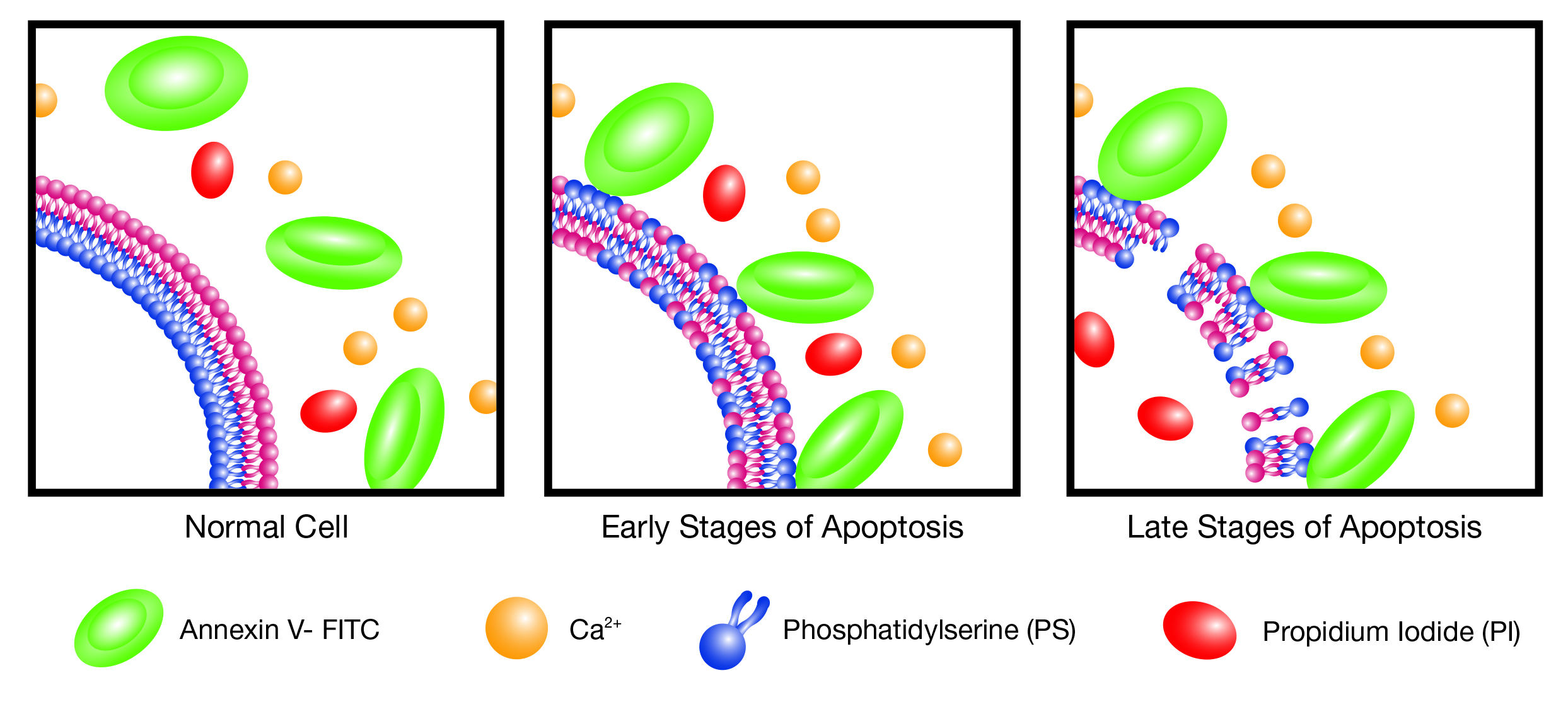
Understanding Apoptosis
Apoptosis, the physiological process of cell death, is a naturally occurring programmed sequence of events leading to the elimination of cells. It plays a critical role in eliminating old or unhealthy cells from the body. Apoptosis is normally a tightly regulated process. However, upon down regulation, leukemia or solid tumor growth can occur. When apoptosis is up regulated, tissue is greatly damaged and diseases such as Alzheimer’s or stroke can result.
Phosphatidylserine (PS) is one of several phospholipid components of mammalian cell membranes. It is normally restricted to the inner leaflet of the lipid bilayer by the enzyme flippase. When a cell undergoes programmed cell death or apoptosis, the PS is no longer restricted to the inner leaflet of the lipid bilayer. Cell surface PS exposure is a classic early indication of apoptotic cells and also acts as a signal for phagocytosis.
Early stage apoptotic processes can be measured in the laboratory easily and most effectively by using fluorochrome – labeled Annexin V protein to stain cells and analyze them by flow cytometry. It is a useful method to screen and analyze cells in a high throughput manner, resulting in a clearer understanding of the cellular response to various stimuli.


